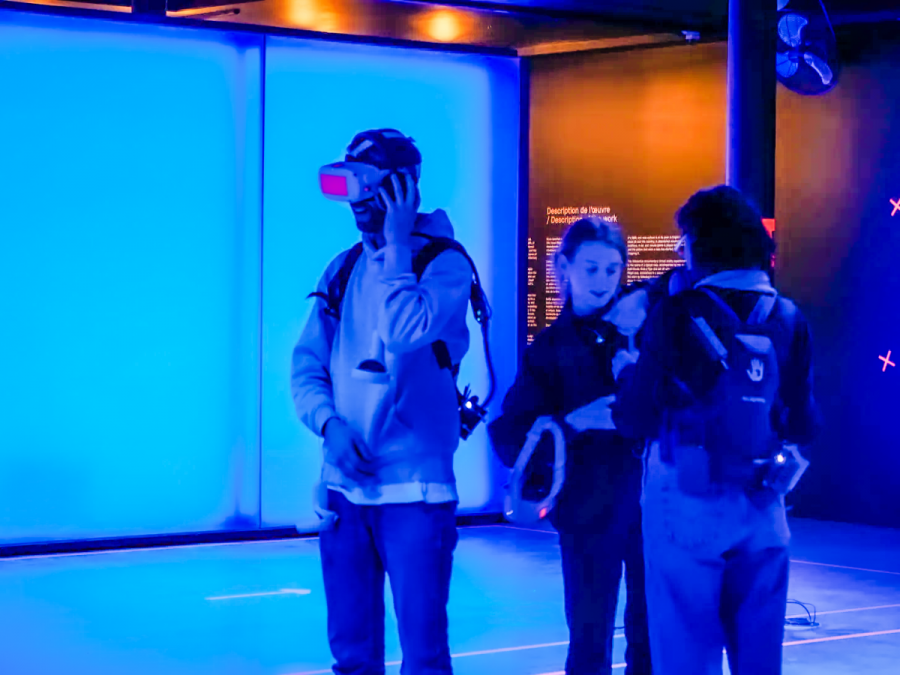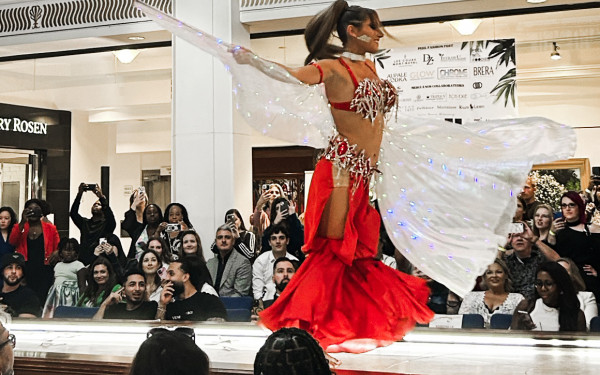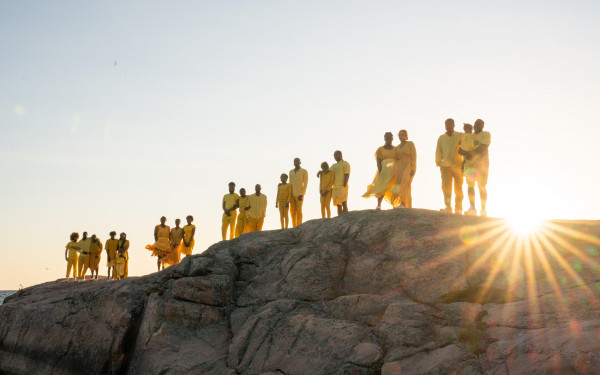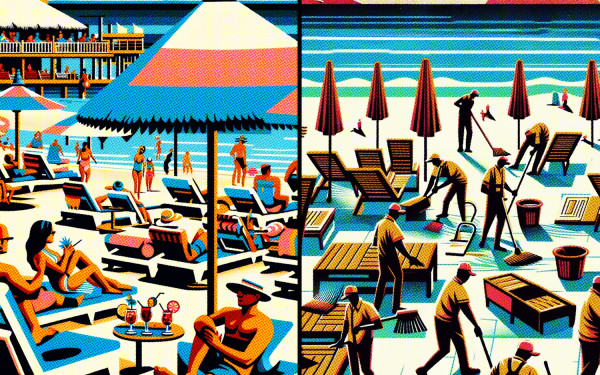Commemorating history through virtual reality
In Pursuit of Repetitive Beats: Darren Emerson’s immersive journey into acid house history
I make it a point to keep my raving strictly to the weekends, steering clear of any midweek madness; especially not at 4 p.m. on a Tuesday.
Yet, that’s exactly where I found myself—at least virtually, with a virtual reality (VR) jacket strapped to my chest, a controller in each hand, and a virtual reality headset encasing my eyes: I’m transported back to 1989, cruising through the suburbs with my friends to find a dance floor hidden from the world.
Darren Emerson’s award-winning immersive documentary experience In Pursuit of Repetitive Beats follows the acid house raving scene of the 1980s in Coventry, England.
In 1989, rave culture was at its peak in England. Illegal raves were organized all over the country, in abandoned warehouses and other isolated locations. A cat-and-mouse game was played between the organizers and the police. Once the rave had started, however, the police had no way of stopping it.
Through the lens of immersive virtual reality, the documentary captures the essence of 1980s raves as sanctuaries of freedom and self-expression, where music acted as the ultimate equalizer, breaking down barriers and uniting people from all walks of life.
These gatherings were more than just parties; they were pivotal spaces for connection and release, where attendees could genuinely be themselves away from societal judgments. Rave culture highlights the significant role of music in forging strong bonds of camaraderie and affection, emphasizing the unique, communal spirit that flourished among ravers.
During this experience, it’s easy to forget you’re standing in a warehouse at the PHI Centre. For half an hour, you find yourself virtually nestled in the backseat of a car, lounging in a friend's bedroom adorned with posters, sitting inside a police station, speeding along a freeway, mingling with the sweaty crowd of a nightclub and wandering through a forest with a hangover as dawn materializes.
This VR journey is meticulously crafted, vividly reanimating the electric atmosphere of the rave scene through fully immersive, 360-degree environments.
I found the experience escalates rapidly; I'm dashing around a corner of an old, crumbling building, evading police, then answering a buzzing payphone to discover the rave's secret location. With the information in hand, I dash back to the car, ready to join the underground celebration. This seamless blend of virtual interaction and narrative depth plunges me into a night of adventure, brilliantly capturing the essence and exhilaration of the acid house movement. In the late ‘80s, acid house became the biggest youth revolution for decades, uniting one ecstatic generation, all while horrifying parents, politicians and police.
This revolution came together with a new drug, ecstasy. An emerging cultural scene grew up around it that changed the social and cultural habits of a generation. Individuals who would have once clashed in violent encounters at football matches found themselves united on dance floors, embodying a newfound ethos of love and unity. The skills once used to orchestrate clashes were repurposed to organize raves, utilizing intricate strategies to evade police intervention, echoing tactics from their days of football hooliganism.
As the media sensationalized the dangers of acid house and ecstasy, the movement became a challenge to authority.
“It prompted the parliament to pass new laws aimed at curbing the revolution and the police to establish a unit dedicated to stopping unlicensed parties: the acid house squad,” Emerson said.
This squad, formed to combat the rising phenomenon of illegal raves, focused its efforts in areas like Coventry, attempting to decipher the secret operations of rave promoters. A movement that had been pro-hedonism rather than anti-authority became political by default.
This period also marked a significant cultural integration, particularly pronounced in the Midlands, a region densely populated with rival football teams. Raves became melting pots, where former adversaries from English cities like Birmingham, Wolves, Coventry, and Aston Villa shared space not as rivals but as companions in celebration. The London rave scene also played a pivotal role in bridging racial divides within Coventry, a city previously segmented along cultural and racial lines. The necessity for powerful sound systems for these events led to collaborations between white working-class youth and Afro-Caribbean communities, who possessed the necessary equipment and expertise in sound system culture.
Before acid house, British nightclubs were often gloomy spots where partygoers primarily went to consume alcohol, possibly connect with someone of the opposite gender, or fight with those of their own. The arrival of acid house, propelled by the newfound popularity of ecstasy, transformed these venues back into what they were meant to be all along: a place to dance.
In the realm of VR and its capacity to honour history, Emerson's insights reveal a deep commitment to crafting immersive experiences that bridge the past with the present.
As he prepares to present a VR film on the Holocaust at South by Southwest, Emerson highlights the significance of VR in making historical events palpable, saying, "That embodiment in an environment is a very powerful element and interacting in VR is as well, because the interaction, the fact that you're doing something, that you're walking, that you're in these spaces means you have a memory of that experience.”
Emerson asserted that VR's strength lies in its ability to immerse users completely, making them feel personally connected to the narrative and the environment.
This immersion, Emerson noted, differs markedly from traditional media like film and TV, offering a more intimate and engaging experience.
"If you put all those things together, good testimony, impactful stories, good design, art direction, interesting interactions that actually say something about the story,” said Emerson. “You're creating something that has an overall kind of emotional and cognitive sort of effect.”


_600_832_s.png)




